Sticks and Stones Won’t Break My Bones, but they Will Clog My Intestines
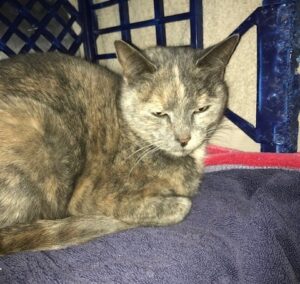 Lucia arrived at Sydney Dogs & Cats Home in a terrible condition. This poorly kitty was found dumped outside the Home in June hunched over with health concerns including dehydration and hypersalivation. She was dangerously underweight and couldn’t keep down food or water. It was clear Lucia was very uncomfortable and needed urgent care to ensure she didn’t waste away.
Lucia arrived at Sydney Dogs & Cats Home in a terrible condition. This poorly kitty was found dumped outside the Home in June hunched over with health concerns including dehydration and hypersalivation. She was dangerously underweight and couldn’t keep down food or water. It was clear Lucia was very uncomfortable and needed urgent care to ensure she didn’t waste away.
Our vets gave Lucia a thorough health check, suspecting she may have enlarged organs or internal obstruction. While she felt normal on the surface, her lack of appetite was a clear indication some further testing was required. Lucia received further supportive care including major abdominal surgery to ensure all bases were covered. During the exploratory surgery, it became clear little Lucia had sticks and grass in her intestines and without immediate surgery, Lucia would not make it.
The vets removed the obstruction in Lucia’s intestine and she is now recovering in the comfort of her foster home. She is making great progress and is now on her weight gain journey receiving a yummy diet of Hill’s Prescription Diet i/d for digestive health. Once she has gained weight and fully recovered from her surgery, she will be available for adoption.
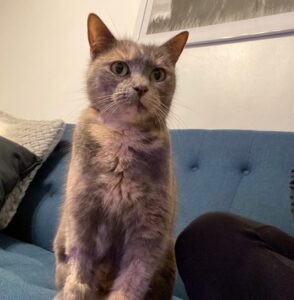 Cats are notorious for ingesting all types of materials, and a cat such as Lucia who likely lived a life on the streets will eat anything that is available to them. Unfortunately, situations such as Lucia’s can be the result. Fortunately, Lucia came to the Home in time for us to perform lifesaving surgery.
Cats are notorious for ingesting all types of materials, and a cat such as Lucia who likely lived a life on the streets will eat anything that is available to them. Unfortunately, situations such as Lucia’s can be the result. Fortunately, Lucia came to the Home in time for us to perform lifesaving surgery.
Lifesaving surgeries, important medical care such as medication, testing and scans and other necessities such as food, bedding and toys are all crucial in caring for each and every animal that comes to the Home. The support of our community is vital in allowing us to transform animals like Lucia into healthy, happy companions. Please help us help them by making a donation today.
Published 16 June 2021




 MON-SUN:
MON-SUN:
 02 9587 9611
02 9587 9611 INFO@SYDNEYDOGSANDCATSHOME.ORG
INFO@SYDNEYDOGSANDCATSHOME.ORG





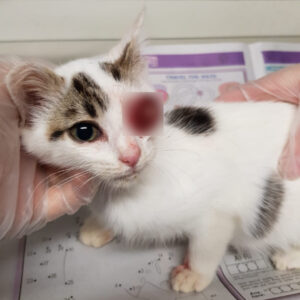 When Jasper (previously Jammie) arrived as a 4-week old kitten, he had fleas and a ruptured right eye. Despite the fact his eye was bulging from its socket, he was a bright little boy who was affectionate and friendly, rubbing against our veterinary staff like nothing was wrong.
When Jasper (previously Jammie) arrived as a 4-week old kitten, he had fleas and a ruptured right eye. Despite the fact his eye was bulging from its socket, he was a bright little boy who was affectionate and friendly, rubbing against our veterinary staff like nothing was wrong.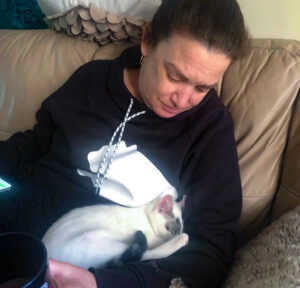 Within a day, Jasper was right at home. He’s made best friends with Angus and has earned himself the nickname ‘Hurricane Jasper’. He has not let his disability slow him down. In fact, with his parents working from home, he’s taken to jumping on their desks, typing emails and knocking office supplies onto the floor – all in a day’s work.
Within a day, Jasper was right at home. He’s made best friends with Angus and has earned himself the nickname ‘Hurricane Jasper’. He has not let his disability slow him down. In fact, with his parents working from home, he’s taken to jumping on their desks, typing emails and knocking office supplies onto the floor – all in a day’s work.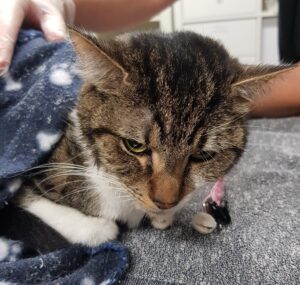 Physical examinations, blood tests, x-rays and an ultrasound revealed Piper had subcutaneous emphysema (air in her chest and under her skin), bruising along her belly, a graze on her chin and damage to her liver.
Physical examinations, blood tests, x-rays and an ultrasound revealed Piper had subcutaneous emphysema (air in her chest and under her skin), bruising along her belly, a graze on her chin and damage to her liver.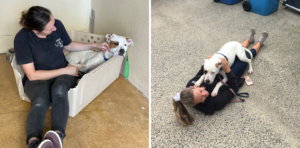 Progress was slow, but over time, Stewy formed bonds with animal attendants and volunteers and started showing his affectionate side, cuddling with them and jumping in excitement when they came to say hello. He started coming into the courtyard every afternoon for playtime and went home with staff on the weekends.
Progress was slow, but over time, Stewy formed bonds with animal attendants and volunteers and started showing his affectionate side, cuddling with them and jumping in excitement when they came to say hello. He started coming into the courtyard every afternoon for playtime and went home with staff on the weekends.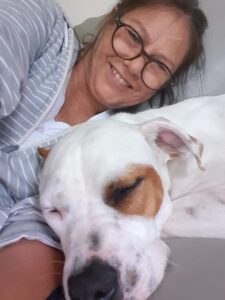 Stewy went into a foster home with Dianna where progress was slow. There were sleepless nights, but Dianna never once gave up on Stewy. After hearing about how he responded to other canines, she borrowed a friend’s dog and we’re told that worked a treat on his confidence.
Stewy went into a foster home with Dianna where progress was slow. There were sleepless nights, but Dianna never once gave up on Stewy. After hearing about how he responded to other canines, she borrowed a friend’s dog and we’re told that worked a treat on his confidence.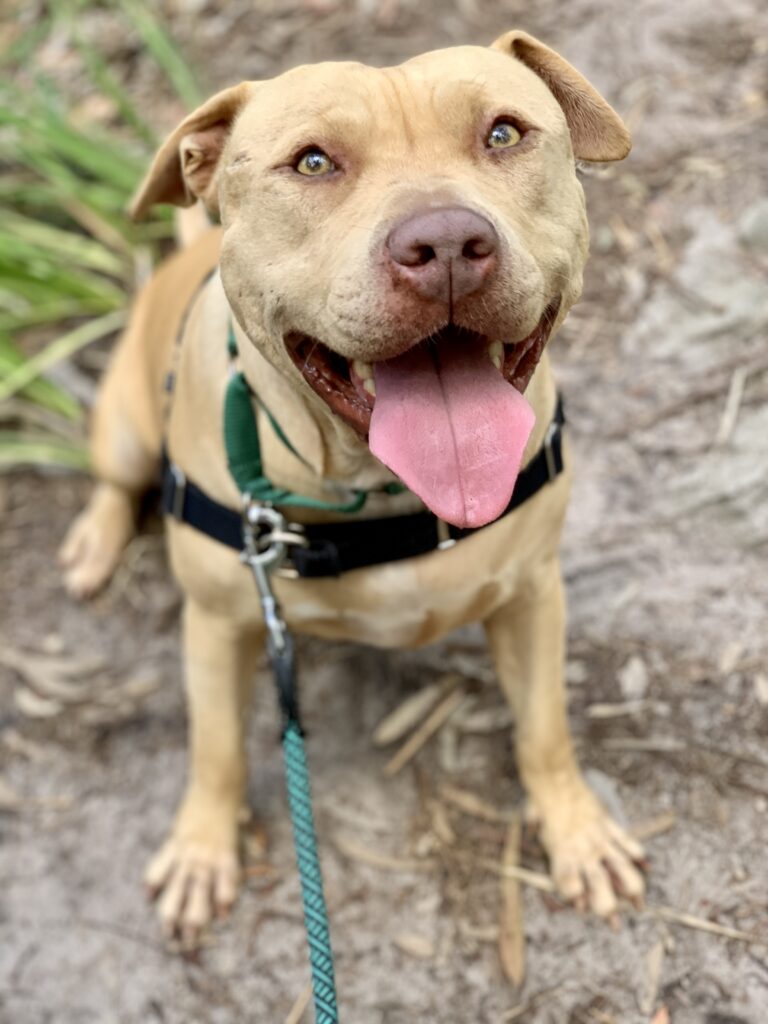 Nine months later, Tammie’s friend was looking to adopt a dog and noticed there was a Staffy with a striking resemblance to Narla on our website, with the same scar across her face. When Tammie saw the picture, she was certain it was her long-lost dog.
Nine months later, Tammie’s friend was looking to adopt a dog and noticed there was a Staffy with a striking resemblance to Narla on our website, with the same scar across her face. When Tammie saw the picture, she was certain it was her long-lost dog.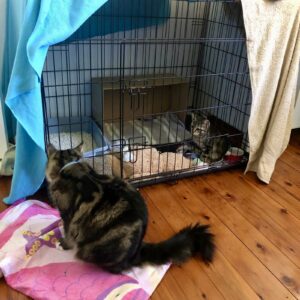 After health checks, Milo was sent straight into foster care with our Reception Team Leader Kylie to help minimise stress. Kylie quickly noticed he would come out of his shell when he heard her other cat vocalise. Milo would even talk back!
After health checks, Milo was sent straight into foster care with our Reception Team Leader Kylie to help minimise stress. Kylie quickly noticed he would come out of his shell when he heard her other cat vocalise. Milo would even talk back!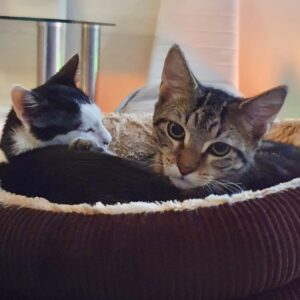 For the first two weeks, Milo seemed a bit confused about the concept of toys and playtime. But with Roro and Mia there to show him the ropes, he’s come to love batting around his jingle balls.
For the first two weeks, Milo seemed a bit confused about the concept of toys and playtime. But with Roro and Mia there to show him the ropes, he’s come to love batting around his jingle balls. Chestnut the Staffy saved a Kelpie puppy’s life last week, after providing a blood donation to help cure the effects of rat bait poisoning.
Chestnut the Staffy saved a Kelpie puppy’s life last week, after providing a blood donation to help cure the effects of rat bait poisoning. Thanks to Chestnut’s blood donation, Blu has been in full health and is keeping her owner Corey on his toes with her newfound energy.
Thanks to Chestnut’s blood donation, Blu has been in full health and is keeping her owner Corey on his toes with her newfound energy.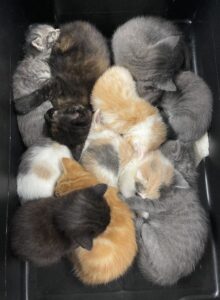 Everyone’s heard of the 12 Days of Christmas, but what about the 12 kittens of Christmas?
Everyone’s heard of the 12 Days of Christmas, but what about the 12 kittens of Christmas?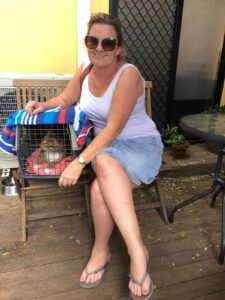 As soon as Colleen heard the news, she jumped onto our website to make sure it was real. “There were a few tears,” she said.
As soon as Colleen heard the news, she jumped onto our website to make sure it was real. “There were a few tears,” she said.
Recent Comments